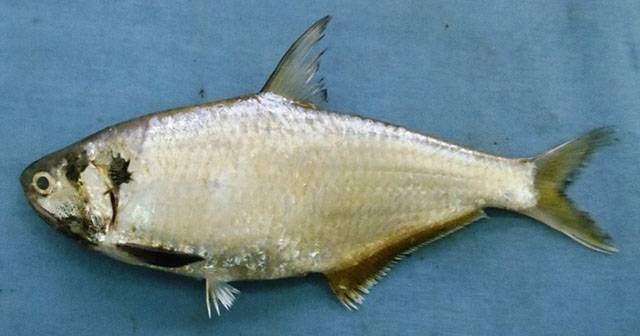| Engraulidae (Anchovies), subfamily: Coiliinae |
| 17.5 cm SL (male/unsexed) |
|
pelagic-neritic; brackish; marine; depth range 0 - 50 m, amphidromous |
| Indian Ocean: India, perhaps reaching to Pakistan, but not recorded from the Gulf and the Red Sea, its place in the Gulf being taken by Thryssa whiteheadi. |
|
Dorsal spines (total): 0-0; Anal spines: 0-0; Anal soft rays: 34-38. Belly with 23 to 26 keeled scutes (isthmus to anus). Tip of snout about level of upper rim of eye. Maxilla moderate; first supra-maxilla small, oval; jaw teeth small. A dark blotch behind upper part of gill opening; small spots on cheek, gill cover, maxilla and paired fins; gill arches pinky orange, inside of gill cover yellow and gold; inner part of anal fin deep yellow, margin whitish. |
| A schooling fish found mostly inshore and perhaps entering estuaries. Although the name malabarica features in the literature, there can be no certainty that it refers to present species. |
|
Data deficient (DD); Date assessed: 12 February 2018 Ref. (130435)
|
| harmless |
|
Source and more info: www.fishbase.org. For personal, classroom, and other internal use only. Not for publication.

